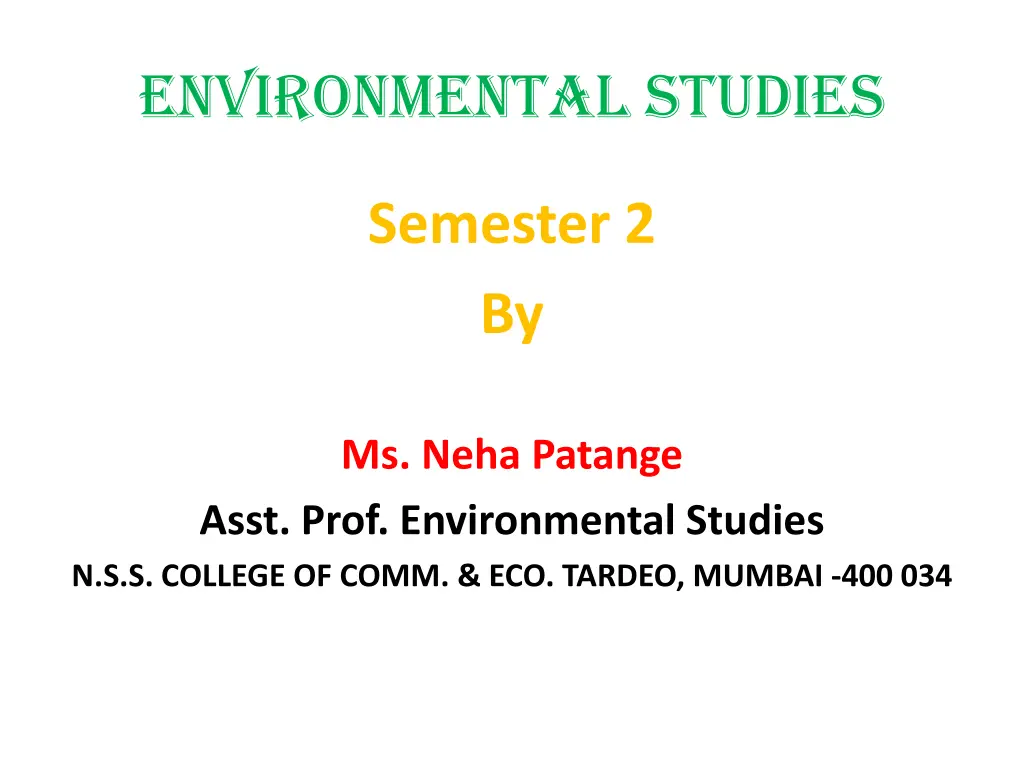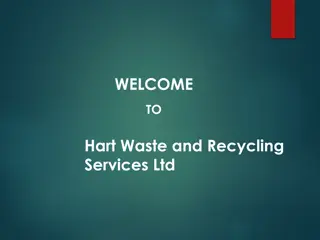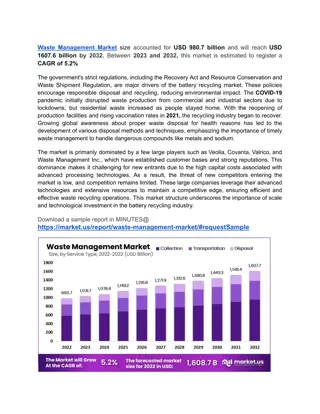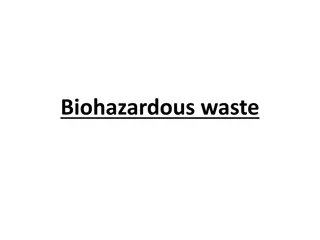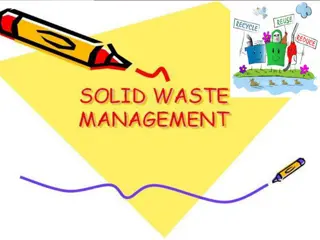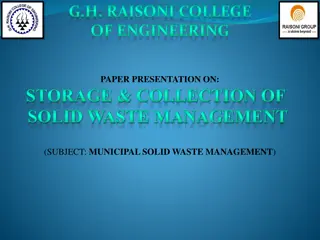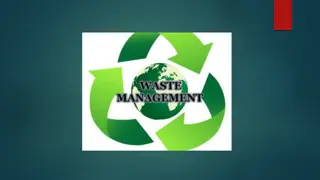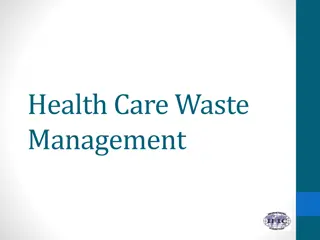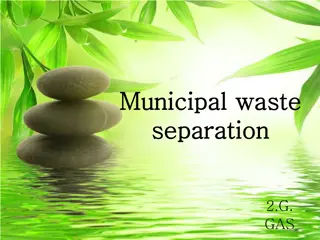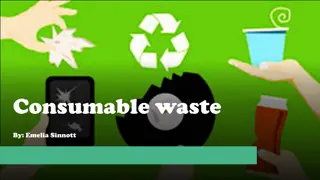Sources of Waste in Environmental Studies
Exploring various sources of waste generation in daily life, health care, agriculture, industry, construction, commerce, mining, radioactivity, and electronics. Understand the impact on the environment and human health.
Download Presentation

Please find below an Image/Link to download the presentation.
The content on the website is provided AS IS for your information and personal use only. It may not be sold, licensed, or shared on other websites without obtaining consent from the author. Download presentation by click this link. If you encounter any issues during the download, it is possible that the publisher has removed the file from their server.
E N D
Presentation Transcript
Environmental studies Semester 2 By Ms. Neha Patange Asst. Prof. Environmental Studies N.S.S. COLLEGE OF COMM. & ECO. TARDEO, MUMBAI -400 034
Sources of waste Sources Of Wastes Generation of waste is a part and parcel of day-to-day human life. Wastes can be generated from various sources. This includes trash or garbage from households, schools, offices, marketplaces, restaurants and other public places. Everyday items like food debris, used plastic bags, soda cans and plastic water bottles, broken furniture, broken home appliances, clothing, etc. make up the wastes generated from such sources. Medical or Clinical sources of wastes Wastes produced from health care facilities, such as hospitals, clinics, surgical theaters, veterinary hospitals, and labs are referred to as medical/clinical waste. This includes surgical items, pharmaceuticals, blood, body parts, wound dressing materials, needles and syringes Agricultural sources of wastes Waste generated by agricultural activities, including horticulture, livestock breeding, market gardens and seedling nurseries, are called agricultural wastes. Wastes generated from this source include empty pesticide containers, old silage wrap, out of date medicines and wormers, used tires, surplus milk, cocoa pods and corn husks.
Industrial Sources of Wastes These are the wastes released from manufacturing and processing industries like chemical plants, cement factories, power plants, textile industries, food processing industries, petroleum industries. These industries produce different types of waste products. Wastes from Construction or Demolition Concrete debris, wood, huge package boxes and plastics from the building materials comprise construction waste, which is yielded as a result of the construction of roads and building. Demolition of old buildings and structures also generate wastes and these are called demolition waste. Commercial Sources As a result of the advancement of modem cities, industries and automobiles, wastes are generated daily on a large scale from commercial enterprises. These may include food items, disposable medical items, textiles and much more.
Mining Sources Mining activities also generate wastes that have the potential to disturb the physical, chemical and biological features of the land and atmosphere. The wastes include the overburden material, mine tailings (the waste left after extracting the ore from the rock), harmful gases released by blasting etc. Radioactive Sources Radioactive sources of wastes include nuclear reactors, mining of radioactive substances and atomic explosions. Electronic sources of waste The DVD and music players, TV, Telephones, computers, vacuum cleaners and all the other electrical stuff at your home, which are of no more use, are electronic wastes. These are also called e-waste, e-scrap, or waste electrical and electronic equipment (WEEE). Some e-waste (like TV) contains lead, mercury and cadmium, which are harmful to humans and the environment.
E waste & plastic waste Indian scenario of E waste Effects of E waste A. Cadmium B. Mercury C. Lead D. Chromium E. Plastics including PVC F. Barium Plastic waste
Effective waste management concepts Rethink Refuse Reduce Reuse Recycle Regulate Research
Pollution and Health hazards from solid waste Unavailability of land Pollution of land Loss of biodiversity Dumping of solid waste Social impact Bio- accumulation Bio- magnification
Solid Waste Management There are different methods of solid waste management. The following are some of the recognized methods: Sanitary Landfill This is the most popular solid waste disposal method used today. Garbage is basically spread out in thin layers, compressed and covered with soil or plastic foam. Modern landfills are designed in such a way that the bottom of the landfill is covered with an impervious liner which is usually made of several layers of thick plastic and sand. This liner protects the ground water from being contaminated because of leaching or percolation. When the landfill is full, it is covered with layers of sand, clay, top soil and gravel to prevent seepage of water. Incineration This method involves burning of solid wastes at high temperatures until the wastes are turned into ashes. Incinerators are made in such a way that they do not give off extreme amounts of heat when burning solid wastes. This method of solid waste management can be done by individuals, municipalities and even institutions. The good thing about this method is the fact that it reduces the volume of waste up to 20 or 30% of the original volume.
Recovery and Recycling Recycling or recovery of resources is the process of taking useful but discarded items for next use. Traditionally, these items are processed and cleaned before they are recycled. The process aims at reducing energy loss, consumption of new material and reduction of landfills. Physical reprocessing Biological reprocessing Avoidance and Reduction methods Composting Due to lack of adequate space for landfills, biodegradable yard waste is allowed to decompose in a medium designed for the purpose. Only biodegradable waste material are used in composting. Good quality environmentally friendly manure is formed from the compost and can be used for agricultural purposes.
Solid waste generation and management in Mumbai Solid waste generated in Mumbai= Paper, textile, leather, plastic, glass, ash, compostable matter. Solid waste management= Generation On site handling, storage and processing Collection Transfer & Transport Processing and recovery Disposal sites Role of ragpickers Role of citizens in waste management
Current practice of solid waste management
